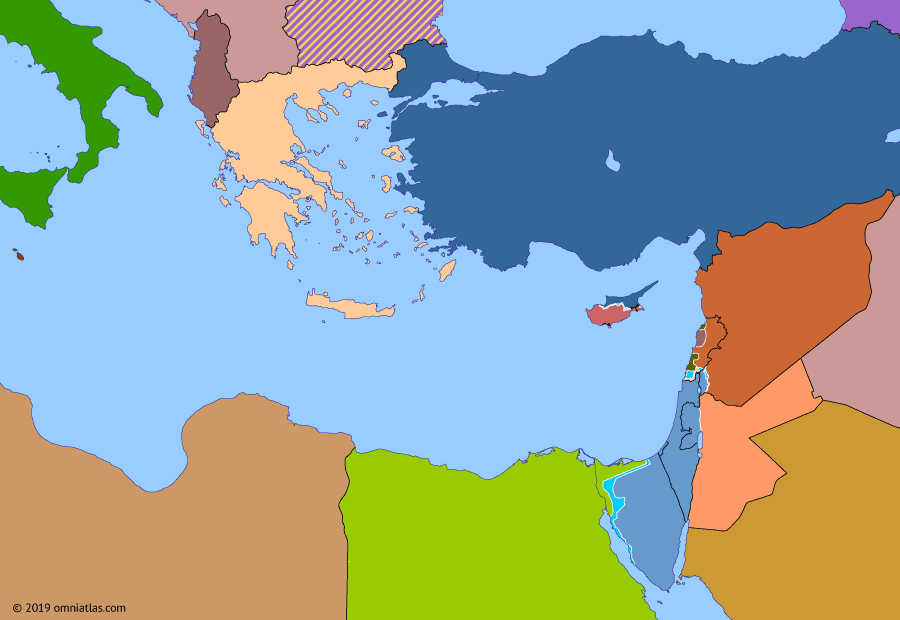Eastern Mediterranean 1979: Israeli withdrawal from Sinai
25 May 1979
25 May 1979
Israeli withdrawal from Sinai
22 Jul 1974 Turkish invasion of Cyprus
15 Nov 1976 Lebanese Civil War
19 Mar 1978 Operation Litani
25 May 1979 Israeli withdrawal from Sinai
22 Dec 1980 Battle of Zahlé
18 Aug 1982 1982 Lebanon War
5 Feb 1984 Multinational Force in Lebanon
19 May 1986 War of the Camps
15 Nov 1988 First Intifada
17 Sep 1991 Collapse of the Eastern Bloc
18 May 1994 Palestinian National Authority
14 Mar 1997 Anarchy in Albania
20 Mar 2001 Second Intifada
22 Jul 2006 2006 Lebanon War
14 Jun 2007 Hamas’s takeover of Gaza
16 Jan 2009 Operation Cast Lead
The destructive Yom Kippur War(1973) convinced Egypt and Israel of the heavy costs of maintaining a state of mutual hostility. Negotiations began soon after the war ended, culminating in the US-facilitated Camp David Accords (1978) and the Egypt–Israel Peace Treaty (1979). In accordance with the peace deal, Israel undertook a phased withdrew from the Sinai peninsula in 1979–82.
